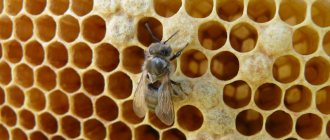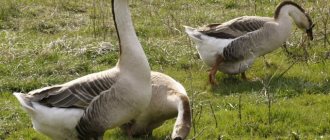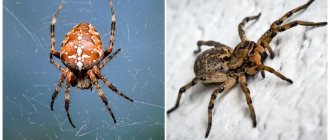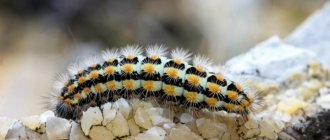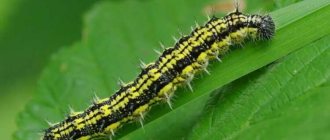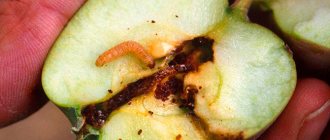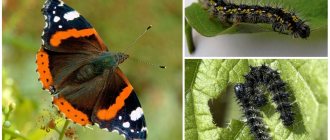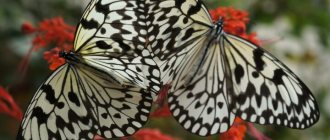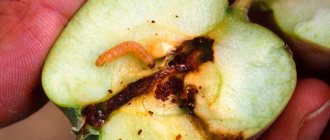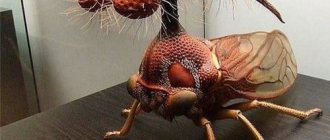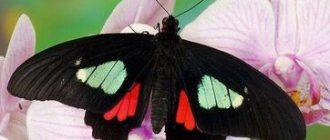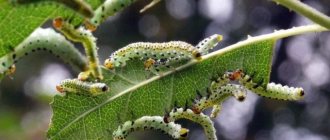How to grow a butterfly at home
In fact, caring for a butterfly will not be difficult. The main thing that is required from the owner of future beauty is patience. As you know, butterflies go through several stages in their development:
- eggs;
- caterpillars;
- pupae;
- butterflies.
There are several ways to start breeding butterflies.
- Before searching for eggs, do some research on your butterfly species to understand where the insects lay their eggs.
- Carefully place the found eggs in a small transparent plastic container (in a large one there is a risk that the eggs will dry out). It is better to transfer the eggs not with your hands, but with available materials: a stick, a leaf.
- There is another way to get butterfly eggs: catch an adult and place it in an aquarium or similar container. Place there the leaves of the plant that this particular type of butterfly feeds on. Subsequently, she will lay eggs on one of the leaves.
- When you have received the eggs, wait for the little caterpillars to emerge from them. If you stored them in a plastic container, immediately move them to the aquarium with leaves of the food plant (those leaves on which you found eggs or caterpillars).
- If you decide to get caterpillars right away, just bring them home and follow the pattern above.
- Place napkins or soft paper under the leaves and spray it with water from time to time to maintain the required level of moisture. For butterflies, the optimal humidity is 60-90%.
- Also, caterpillars should be carefully protected from direct sunlight.
- The home of future butterflies should be large enough to provide room for growth and development.
- Do not forget to constantly add new food that the caterpillars feed on.
- Be sure to remove caterpillar droppings, as they can serve as a source of infection and cause rot.
- Place several upright sticks or branches with leaves in the aquarium. When the caterpillars pupate, they will need to cling to something to hang on to.
You should know that moth pupae turn into mature individuals in the ground: for them, it will be necessary to cover the bottom with a layer of soil.
- Before the pupation process itself, the behavior of the caterpillars changes: they stop eating and begin to behave restlessly.
- When the caterpillar hangs on the branch, you will notice how it begins to spin a cocoon around itself. When she is completely in the cocoon, you can start counting. Soon you will have real live butterflies!
- Having emerged from the pupa, the butterfly hangs on a branch for a while to spread its wings. If there are no branches nearby and the butterfly does not spread its wings on them, it will not be able to fly.
- Feeding an adult butterfly is very simple: they eat honey or sugar (mixed with a little water), fresh fruit and even fruit with foulbrood.
Reproduction in captivity
A couple of days after the “birth” of the butterflies you can mate. But you will need several generations of butterflies to mate, because the males hatch a little earlier than the females (by a few days). Remember that on the fourth day of life, butterflies will no longer be able to reproduce.
For mating itself, you will need a room, at least three meters in height, for the free movement of butterflies, an insectarium. You need to create a high temperature in the room - 28-30 degrees Celsius. Make sure there is sufficient humidity.
In addition to food for the butterflies themselves, the insectarium should also have a food plant (many butterflies do not mate if it is not nearby).
You may also be interested in the article in which we talked about how to make a butterfly feeder. In addition, in this material we described in more detail what butterflies eat and how you can make a nutrient mixture for them.
Conditions of detention
From an aesthetic point of view, it is more interesting to keep daytime butterflies, but it is worth considering that these insects are also attracted to light. During the day, the pet will tend to the window or sit on the curtains, and with the onset of darkness it will be drawn to all the lamps that are on.
Of course, the butterfly needs to be released to fly around the apartment, but it must have its own home. For this you can use:
- Plastic container;
- large glass jar;
- insectarium.
An insectarium equipped with special equipment or at least a large plastic container will be required when breeding butterflies. And with normal maintenance, this is important if other animals live in the house, especially cats. Otherwise, with a butterfly flying freely around the apartment, at least there will be no curtains on the windows. And during the hunt, both pets can suffer.
At temperatures from +22 °C and humidity within 60-80%, butterflies are active throughout the day. If the air in the apartment is excessively dry, the insect is sprayed with a spray bottle 1-2 times a day from a distance of about 30 cm from the wings.
The more time the pet spends in free space, the better. Some owners only place the insect at night in an ordinary box, where they put a sponge moistened with water, and during the day they let it fly around the apartment.
And now the main question that worries potential owners of winged beauties: what to feed a butterfly at home?
Caterpillar - types, photos and names, transformation into a butterfly, what it eats
Get ready for a journey into the colorful world of insects! You will see unusual butterflies and caterpillars common in the Moscow region, learn to identify them by their external signs and simply get aesthetic pleasure!
When we talk about the benefits of butterflies, we most often mean the properties of adult individuals. Thus, these insects are able to pollinate plants and attract birds to the garden.
And if we mention harm, then here we are talking about the caterpillar stage, when the insect actively feeds on plants and can harm garden plantings. The butterflies themselves feed on nectar and are absolutely safe for plant health.
Therefore, we will agree in advance that when we call a butterfly “harmful,” we mean its caterpillars.
Now let's take a closer look at the most common fluttering insects that you can find on your site, and determine which of them are useful and which are harmful!
Admiral - butterfly with stripes
Vanessa atalanta, wingspan 50-65 mm
The admiral is easy to recognize: there are red stripes on both sides of his wings. According to one version, it was thanks to this color that the butterfly got its name, because Russian admirals used to have ribbons over their shoulders and red stripes on their trousers. The lower wings of the insect are also decorated with red stripes, on which black dots are clearly visible. The edges of the wings are wavy.
You can meet such a beautiful butterfly not only in Russia, but also in North Africa, North America and even New Zealand. The admiral usually goes to southern countries to spend the winter, but sometimes hides under the bark of trees and remains there until spring. Previously, the admiral was included in the Red Book of Russia, but now the population has recovered.
animalreader.ru
It is not so easy to recognize the admiral's caterpillar as a future butterfly. Dark color, yellow dots on the sides of the body and frightening spikes - the insect is perfectly protected from birds and knows how to camouflage itself. It can be found from May to August on the leaves of nettles, hops and thistles.
How to attract an admiral butterfly. The Admiral loves thistles, asters and blackberries, and at the end of the season he is not averse to eating cracked plums and pears, especially if they have fermented. Place some fruit in a bowl and butterflies will flock to the smell. And to see the caterpillars, plant nettles on the site, which will also be useful as plant food.
The ancient Indians believed that if you catch a butterfly, whisper a cherished wish to it and release it into the wild, it will certainly come true. Try it!
Types of caterpillars - photos and names
Among the great variety of different caterpillars, the following varieties are of greatest interest:
or
cabbage white butterfly caterpillar ( Pieris brassicae )
lives throughout Eastern Europe, northern Africa to the Japanese islands, and was also introduced to South America.
The caterpillar is 3.5 cm long, has 16 legs and has a light green body covered with black warts and short black hairs. Depending on the weather, the caterpillar stage lasts from 13 to 38 days.
These caterpillars feed on cabbage, horseradish, radishes, turnips, turnips and shepherd's purse. They are considered the main pest of cabbage.
- Moth (surveyor) caterpillar ( Geometridae )
It is characterized by a long thin body and undeveloped abdominal legs, due to which it has an original method of movement - it bends in a loop, while pulling the abdominal legs towards the pectoral legs. The family includes more than 23 thousand species of moths distributed throughout the world.
All types of caterpillars of this family have well-developed muscles, and therefore are able to attach themselves vertically to plants, perfectly imitating broken branches and petioles. The color of the caterpillars is similar to the color of foliage or bark, which additionally serves as an excellent camouflage.
They eat tree needles and hazel.
- (Cerura vinula = Dicranura vinula)
lives throughout Europe, Central Asia and northern Africa. Adult caterpillars grow up to 6 cm and are distinguished by a green body with a purple diamond on the back, bordered by a white outline.
In case of danger, the caterpillar inflates, takes a threatening pose and sprays out a caustic substance.
The insect remains in the caterpillar stage from early summer to September, feeding on the leaves of plants from the willow and poplar families, including the common aspen.
- Redtail caterpillar ( Calliteara pudibunda )
found in the forest-steppe zone throughout Eurasia, as well as in Asia Minor and Central Asia. The caterpillar, up to 5 cm long, is pinkish, brown or gray in color.
The body is densely covered with individual hairs or tufts of hair, at the end there is a tail of protruding crimson-colored hairs. This is a poisonous caterpillar: upon contact with human skin, it causes a painful allergy.
These caterpillars eat the foliage of various trees and shrubs, especially preferring hops.
- Silkworm caterpillar ( Bombyx mori )
or
silkworm
Lives in East Asia: in northern China and Russia, in the southern regions of Primorye. The caterpillar is 6-7 cm long, its wavy body is densely covered with blue and brown hairy warts.
After 4 molts, completing the 32-day development cycle, the color of the caterpillar becomes yellow. The food of the silkworm caterpillar is exclusively mulberry leaves.
This insect has been actively used in sericulture since the 27th century BC. e.
- Corrosive woodworm caterpillar ( Zeuzera pyrina )
from the carpenter family. It is found in all European countries except the Far North, as well as in South Africa, Southeast Asia and North America. It overwinters twice, during which time it changes color from yellow-pink to yellow-orange with black, glossy warts. The length of the insect is 5-6 cm. Caterpillars live inside the branches and trunks of various trees, feeding on their juices.
- Swallowtail caterpillar ( Papilio machaon )
lives throughout Europe, Asia, northern Africa and North America.
One of the most colorful caterpillars: at first black, with scarlet warts, and as it grows it becomes green with black transverse stripes. Each stripe contains 6-8 red-orange spots.
The disturbed caterpillar secretes an odorous orange-yellow liquid. It feeds on celery, wormwood, parsley, and sometimes alder leaves.
The smallest caterpillar in the world
is a member of the moth family.
